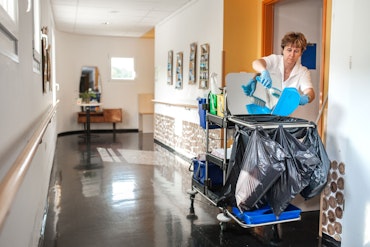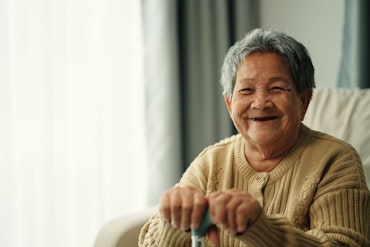What you need to know about the free shingles vaccine available next month
As people age, a diminished immune system may heighten the risk of subsequent shingles episodes.
![<p>Shingrix offers Australia one of the most extensive shingles vaccination programs globally, outside of the United States. [Source: Shutterstock]</p>](https://agedcareguide-assets.imgix.net/news/articles/wp/shingrix__0910.jpg?fm=pjpg&format=auto&w=550&q=65)
Shingrix offers Australia one of the most extensive shingles vaccination programs globally, outside of the United States. [Source: Shutterstock]
Key points:
- Shingrix is the first non-live vaccine to be listed on the National Immunisation Program for the prevention of shingles
- Shingrix will be available to older people for free from November 1, 2023
- Approximately one in three people will develop shingles in their lifetime and nearly all adults over the age of 50 carry the inactive virus that causes shingles
The new Shingrix vaccine has been listed on the National Immunisation Program for the prevention of herpes zoster and post-herpetic neuralgia. Older adults who are at risk of shingles, along with immunocompromised people over the age of 18, will be eligible to receive the vaccine for free from November 1, 2023.
‘Non-live’ vaccines do not cause disease as they cannot replicate in the body, even for those with weakened immune systems. For people who are severely immunocompromised, the risk of developing shingles can be up to three times higher. As such, the Shingrix vaccine will replace the Zostavax vaccine following expert approval.
Shingles may make a person feel incapable of managing day-to-day tasks without experiencing intermittent and shocking pain. The condition does not typically last for longer than a month, with symptoms improving over two – four weeks.
Those eligible for the Shingrix vaccination via the NIP from the start of next month include:
- Older adults aged 65 years and older
- Aboriginal and Torres Strait Islander individuals aged 50 years and older
- Immunocompromised people aged 18 years and older, with conditions such as haemopoietic stem cell transplant, solid organ transplant, haematological malignancy and advanced or untreated HIV
Robert Booy, honorary professor at the University of Sydney and infectious diseases expert, said the NIP listing is a positive step forward by the Government in helping Australians who are vulnerable to shingles.
“People who develop shingles generally need time off [of] work, sometimes for weeks and if they experience post-herpetic neuralgia, the pain can linger long after the rash and blisters have disappeared,” Booy said.
Post-herpetic neuralgia impacts a fifth of people who experience shingles, leading to ongoing pain despite visible improvement of symptoms.
“Those 18 years of age and over who are immunocompromised, as well as people aged 65 or older have greater potential to develop shingles and related complications.
“I encourage those who fall into the groups for this NIP listing to speak with their healthcare professional about their risk of shingles and how they can protect themselves.”
Giulia Jones, chief executive officer of Painaustralia, said the Government’s announcement will be welcome news for many Australians at risk of shingles.
“The pain of shingles is often described by our members as the worst they have ever experienced,” Ms Jones said.
“Often, these people are already in pain due to other health issues and if they develop ongoing complications, their life can be very uncomfortable.
“Painaustralia is really pleased shingles is being taken seriously by the Government.”
Minister for Health and Aged Care Mark Butler told reporters from ABC News that the Shingrix vaccine, which cost $826.8 million, would be approximately 90 percent effective for older adults in shingles prevention, compared to 40 percent efficacy with the existing vaccine.
Do you intend to get the jab? Let the team at Talking Aged Care know and subscribe to the newsletter.























